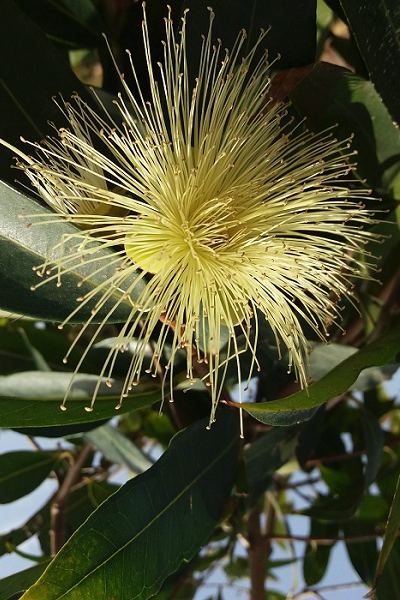 Botanical name: Pachira aquatica
Botanical name: Pachira aquatica
Crown and root system: The Malabar chestnut (also called Saba nut) has a small crown and an unusual appearance: a green trunk with a rounded bottom. It has large palmate leaves that resemble fingers. In cold winters the leaves will fall off but the tree recovers quickly in the spring.
Description of the fruit: The Malabar has impressive yellow feather-like flowers, and the fruit look like a large cacao pod. When ripe, the pod opens up to reveal a row of edible nuts. They look like macadamia nuts and can be eaten fresh, roasted or after being soaked in salt water. The shell can be easily removed.
Growing regions: Areas with no frost. It is recommended that the tree be planted in a place that is out of the wind in order to protect the trunk.
Ripening date: End of summer – beginning of fall.
Planting in a container: May be planted in a container.
Recommended planting season: All year round, except for winter months.
Good to know:
The Malabar nut belongs to the chestnut family. In Asia the Malabar / Saba is call a “money tree” and is considered to bring economic success. Because of this, you are liable to find the tree in many businesses as a fruit tree, or as a bonsai tree with a braided trunk.

